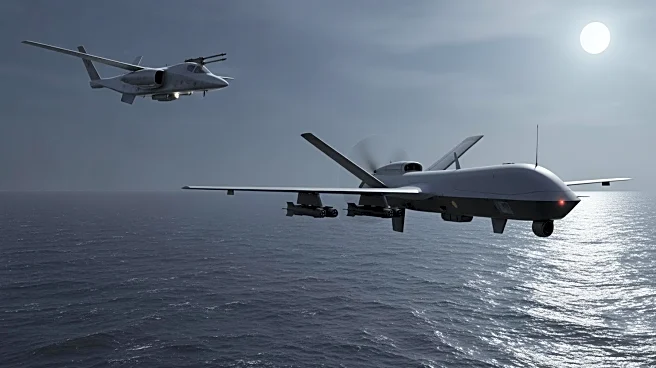What's Happening?
Unauthorized drone flights over U.S. military installations, border facilities, and mass public events are increasing, raising concerns about national security. Senate Intelligence Committee Chairman Tom
Cotton highlighted the growing threat, citing over 350 unauthorized drone flights over military installations in 2024 and more than 27,000 drones detected near the U.S. southern border. Cotton emphasized the risks posed by inexpensive drone technologies proliferating among criminal organizations and non-state actors, potentially leading to mass-casualty attacks. The senator noted legal gaps in detection and authority, with many U.S. military bases lacking authorization to deploy counter-drone systems. Cotton is backing legislative measures to close enforcement gaps and enhance drone defense capabilities.
Why It's Important?
The rise in unauthorized drone flights poses significant risks to U.S. national security, particularly at military bases and civilian gatherings. The proliferation of drone technology among non-state actors and criminal organizations increases the potential for surveillance and kinetic attacks. The current legal framework is insufficient to address these threats, leaving many military installations vulnerable. Cotton's proposed legislation aims to empower state and local law enforcement to detect and disable hostile drones, potentially preventing catastrophic events. The issue is particularly pressing with major events like the Olympics and World Cup approaching, where drone incursions could threaten public safety.
What's Next?
Cotton, along with bipartisan co-sponsors, is advocating for the DEFENSE Act and the COUNTER Act to enhance drone defense capabilities. These measures would allow more American bases to track and neutralize drones and enable trained law enforcement officers to manage drone threats at public gatherings. The upcoming Super Bowl and other major events highlight the urgency of these legislative efforts. If Congress fails to act, the U.S. may face increased vulnerability to drone-related incidents. The federal government is funded through January 30, but further funding decisions could impact airspace protection authorities.











